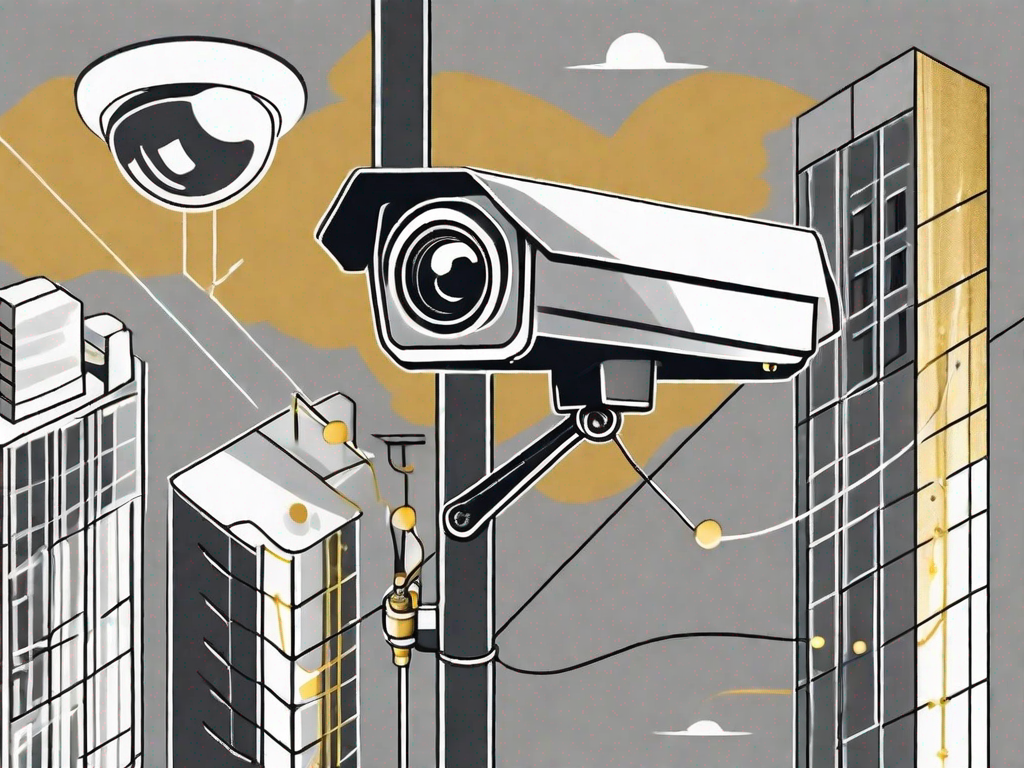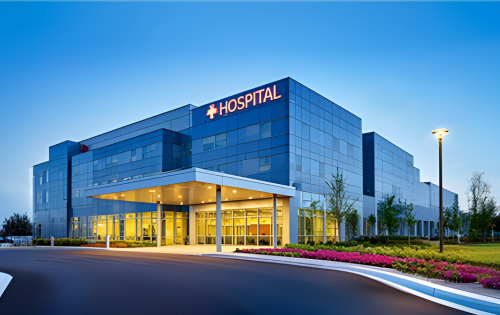
5 Things to Consider When Installing CCTV Monitoring Systems
Installing CCTV monitoring systems is an excellent way to enhance the security of your premises. Whether you are a business owner or a homeowner, it is crucial to understand the importance of CCTV systems and the factors to consider before installation. In this article, we will explore the key aspects you need to keep in mind when setting up a CCTV monitoring system.
Understanding the Importance of CCTV Monitoring Systems
Closed-Circuit Television (CCTV) plays a vital role in ensuring the safety and security of your property as well as your employees and your guests. The presence of surveillance cameras alone acts as a deterrent against potential criminals. Additionally, CCTV systems provide valuable evidence in case of any illegal activities or incidents within the covered area.
But let’s delve deeper into the world of CCTV monitoring systems and explore their significance in safeguarding your property.
The Role of CCTV in Security
CCTV systems act as an extra pair of eyes, monitoring and recording activities in specific locations. They help monitor access points, detect unauthorized entry, and can provide crucial evidence in investigations. The mere presence of CCTV cameras can greatly reduce the risk of criminal activities. It is important to work with security professionals to design coverage for your business, but also to do so in a way that the potential thief doesn’t know exactly what can be seen. This alone can stop someone from making an attempt.
Imagine a scenario where a suspicious individual attempts to break into a property protected by a CCTV system. As they approach the premises, the cameras capture their every move, providing real-time footage to security personnel. This immediate awareness allows for swift action to be taken, preventing any potential harm or loss.
Moreover, CCTV systems are not limited to outdoor surveillance. They can also be installed indoors, ensuring comprehensive coverage of your property. This means that every corner of your premises is under constant watch, leaving no room for any unauthorized activities to go unnoticed.
Benefits of a Properly Designed, Well-Installed CCTV System
A well-installed CCTV system offers numerous benefits, including:
- Enhanced deterrence against theft and vandalism
- Increased accountability and employee productivity
- Protection against fraudulent insurance claims
- Remote monitoring options for added convenience
Investing in a properly designed and implemented CCTV system is a proactive step towards safeguarding your property and ensuring the safety of its occupants. With their ability to deter criminal activities, provide valuable evidence, and offer a range of benefits, CCTV monitoring systems have become an indispensable tool in today’s security landscape.
Key Factors to Consider Before Installation
Before installing a CCTV monitoring system, there are crucial factors that you must carefully consider. These factors will not only ensure the effectiveness of your security system but also provide you with peace of mind knowing that your property is well-protected.
Assessing Your Security Needs
The first step is to identify your specific security requirements. Consider factors such as the type of property, the layout, and the level of security desired. Are you protecting a residential property or a commercial establishment? Is it a small office or a large warehouse? Understanding the nature of your property will help you determine the level of security needed. Working with a security professional that can help you understand concerns that you may not have been aware of is very important.
Assessing your security needs will also help determine the number of cameras required, the ideal locations, and the level of coverage desired. For example, if you have a large outdoor area, you may need cameras with a wider field of view and night vision capabilities to ensure comprehensive surveillance even in low-light conditions.
Moreover, consider the potential vulnerabilities of your property. Are there blind spots where unauthorized access could occur? Are there areas with high-value assets that require extra protection? By identifying these areas, you can strategically position your cameras to maximize their effectiveness. A well-trained and experienced security consultant can help you by being your security partner to identify proper coverage areas and angles as well as the correct equipment to accomplish satisfying your needs and concerns.
Choosing the Right CCTV System
Once you have determined your security needs, it is essential to choose the right CCTV system. With numerous options available in the market, selecting the most suitable system can be overwhelming. However, considering a few key factors can help simplify the decision-making process.
First, consider the camera resolution. Higher resolution cameras provide clearer and more detailed images, allowing for better identification of individuals and objects. This is especially important when it comes to evidentiary purposes or investigations. How do you really know what resolution will accomplish your goals? Your security professional partner can provide a demo of suggested cameras so that you know you will be happy with the view and resolution.
Secondly, evaluate the field of view offered by the cameras. A wider field of view allows for greater coverage, reducing the number of cameras needed to monitor a specific area. This not only saves costs but also simplifies the installation process.
Additionally, consider the night vision capabilities of the CCTV system. If your property requires surveillance during nighttime or in low-light conditions, opt for cameras with infrared technology or low-light sensitivity. This will ensure that your cameras can capture clear footage even in challenging lighting situations.
Lastly, consider the compatibility of the CCTV system with other security systems you may have in place. Integration with alarms or access control systems can enhance the overall security of your property, allowing for a seamless and comprehensive security solution. This can give you a more seamless security program which can make your business not only safer, but be more profitable.
Determining the Best Locations for Cameras
By carefully considering these factors, you can ensure that the CCTV system you choose is tailored to your specific security needs and provides optimal protection for your property.
Identify the areas that require surveillance and assess the most vulnerable spots. This may include entry and exit points, parking lots, and common areas. By strategically placing cameras in these areas, you can effectively monitor and deter potential threats.
When determining the best locations for your cameras, it is also important to consider camera placement that allows for clear identification of individuals and captures facial details. This can be crucial in the event of an incident, as it will provide valuable evidence for identification and investigation purposes. Your security professional can make suggestions of the best locations to accomplish your anticipated views. Additionally, they can work with you on the final design in a way to not only potentially use less cameras, which keeps costs down, but do so in a way that will make service on the system in the future easier which will save the business money.
Furthermore, it is worth noting that the placement of cameras should also take into account the surrounding environment. Factors such as lighting conditions, potential obstructions, and the range of the camera’s field of view should all be considered when determining the optimal placement.
Ensuring Adequate Coverage of Your Premises
It is essential to ensure that your CCTV system provides comprehensive coverage of your premises. By assessing your property’s layout, you can identify areas that may require additional camera coverage.
One important consideration when assessing coverage is the presence of blind spots. These are areas where the camera’s field of view is obstructed, either by physical objects or environmental factors. Blind spots can create vulnerabilities in your surveillance system, as they provide potential hiding spots for intruders or areas where incidents may go unnoticed.
In addition to blind spots, it is also important to consider areas that are difficult to secure. These may include large open spaces, remote corners, or areas with limited access. By ensuring that these areas are adequately covered by your CCTV system, you can minimize the risk of unauthorized access or suspicious activities going unnoticed.
Adequate coverage of your premises is crucial in maximizing the effectiveness of your CCTV system. It not only helps to deter potential threats but also provides valuable evidence in the event of an incident. By carefully assessing the layout of your property and strategically placing cameras, you can ensure that your surveillance system provides the necessary coverage to protect your premises.
Technical Aspects of CCTV Installation
Understanding the technical aspects of CCTV installation is crucial for optimal system performance. A well-designed and properly installed CCTV system can provide effective surveillance and enhance security measures. That said, there are many easy to use and easy to understand systems on the market today and your security professional can work with you on choosing the best manufacturer for you.
The Importance of Proper Wiring and Power Supply
Proper wiring and power supply are essential for the reliable operation of the CCTV system. The distance between cameras and the recording device should be considered when planning the cable routes. It is important to choose the appropriate type of cables, such as Cat 5, to ensure optimal signal transmission.
Furthermore, power supply options should be carefully evaluated. Cameras require a stable power source to function effectively. It is crucial to ensure that power outlets are conveniently located near each camera. Additionally, backup power systems, such as uninterruptible power supplies (UPS), should be in place to prevent downtime during power outages.
Maintenance and Upgrades
Maintaining and upgrading your CCTV system is crucial to ensure its long-term effectiveness. In this section, we will explore the importance of regular system checks and maintenance, as well as planning for future system upgrades.
Regular System Checks and Maintenance
Regularly inspecting and maintaining your CCTV system is essential to ensure it remains in proper working condition. By taking proactive measures, you can prevent potential issues and ensure optimal performance. Here are some key aspects to consider:
- Cleaning camera lenses: Over time, dust, dirt, and other particles can accumulate on camera lenses, affecting the quality of the footage. Regularly cleaning the lenses will help maintain clear and sharp images.
- Checking cables for wear and tear: Cables are susceptible to wear and tear, especially in outdoor installations or high-traffic areas. Inspecting the cables regularly will help identify any damage or deterioration, allowing for timely repairs or replacements.
- Updating firmware or software: Manufacturers often release firmware or software updates to enhance the functionality and security of CCTV systems. Staying up to date with these updates is crucial to ensure your system is equipped with the latest features and protections.
By performing routine maintenance tasks, you can prevent system failures, minimize downtime, and extend the lifespan of your CCTV system. Pavion has ways to help you with the proper maintenance and check of your system – make sure to ask us how.
Planning for Future System Upgrades
Technology is continuously evolving, and so are security requirements. When installing your CCTV system, it is essential to plan for future upgrades and scalability. By considering the following factors, you can ensure your system remains effective in the long run:
- Remote access: As businesses and organizations become more mobile, the ability to access CCTV footage remotely has become increasingly important. Planning for remote access capabilities allows you to monitor your premises from anywhere, enhancing convenience and flexibility.
- Advanced analytics: CCTV systems are now equipped with advanced analytics capabilities that can provide valuable insights. These analytics can help detect suspicious activities, identify patterns, and improve overall security. Considering the integration of advanced analytics into your system will enable you to leverage these powerful features.
- Cloud storage options: Traditional CCTV systems often rely on on-site storage solutions, which can be limited in capacity and vulnerable to physical damage or theft. Exploring cloud storage options provides a secure and scalable solution for storing and accessing your CCTV footage.
By planning for future upgrades and considering these additional features, you can future-proof your CCTV system and adapt to evolving security needs. By considering these five things before installing CCTV monitoring systems, you can ensure enhanced security for your premises. Understanding the importance of CCTV systems, assessing your security needs, choosing the right system, optimizing camera locations, and taking care of technical aspects and maintenance will help you make informed decisions and maximize the benefits of your CCTV monitoring system.


